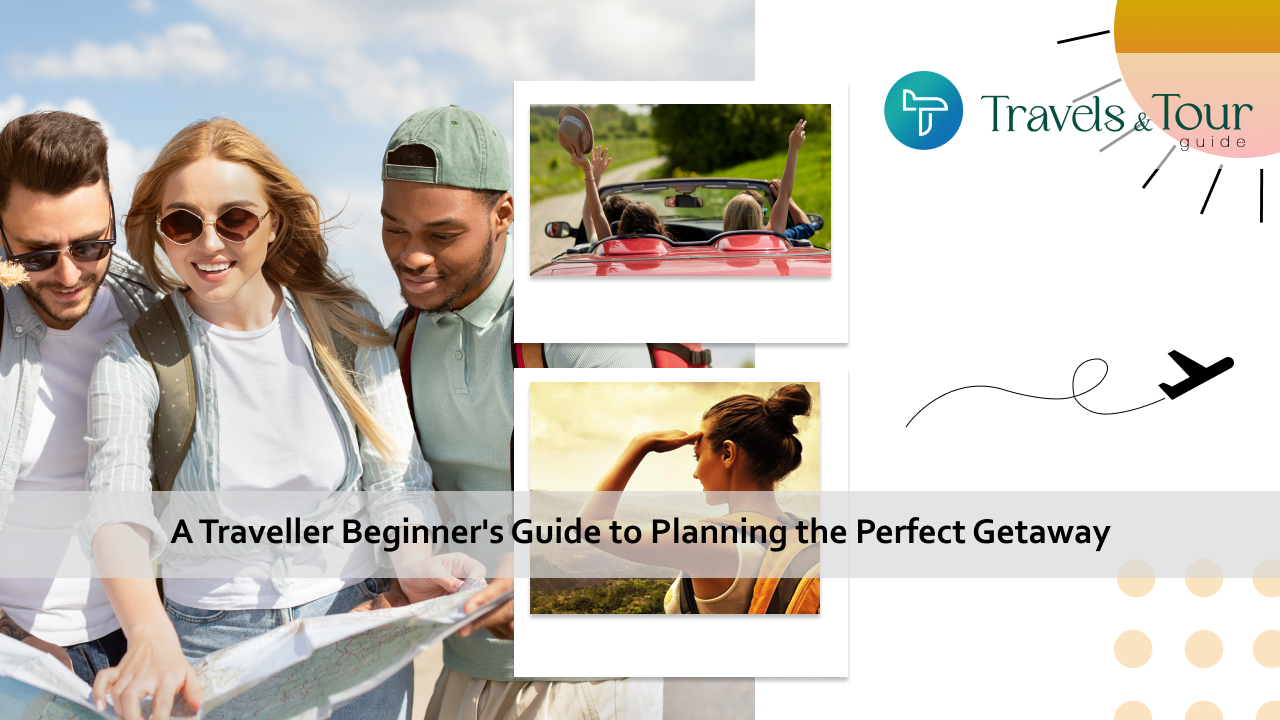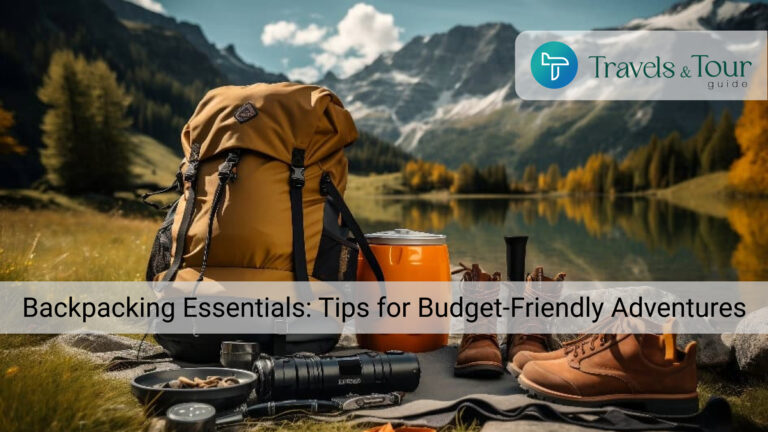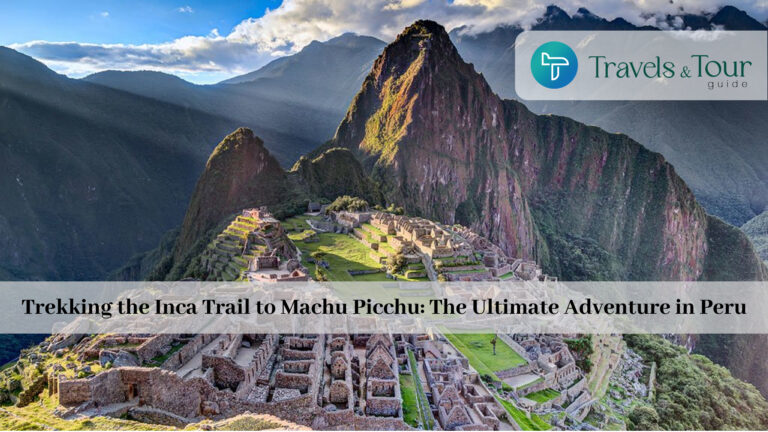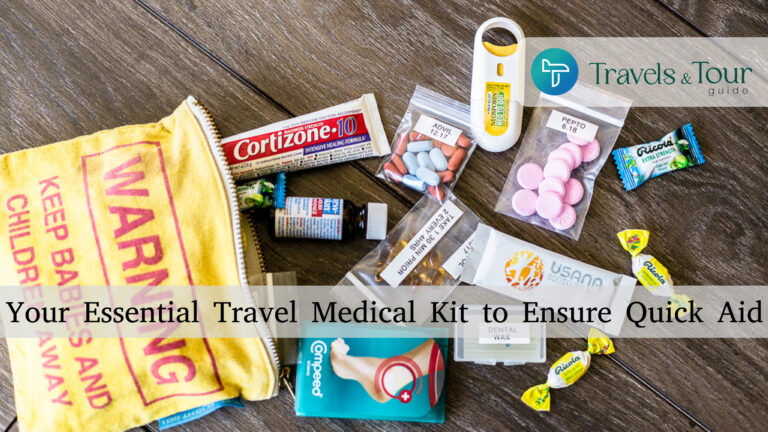A Traveller Beginner’s Guide to Planning the Perfect Getaway
Have you ever dreamed of going on an incredible adventure but felt overwhelmed by the planning process? Well, that does not come as a surprise, since planning for the perfect adventure is never ever a daunting task. In fact, with the right approach, it can be an exciting and rewarding experience in itself.
When you first start planning your adventure, it ia never ever a smooth sailing. You might know what you want to do, but with your list of interests grewing, it can be increasingly overwhelming. You might tend to find yourself drowning in a sea of information, unsure of where to start or how to make sense of it all. The thought of arranging the logistics is clearly filled with anxiety, taking away the joy and excitement to be felt.
But over time, you are sure to develop a foolproof strategy for planning adventures with confidence. Gradually, learn how to navigate the chaos and turn it into a well-organized, stress-free process. But for now, we want to share what you should do.
Whether planning a week-long hiking trip through the mountains or a month-long backpacking adventure across a new continent, this guide will equip you with the tools you need to make the most of your experiences. Say goodbye to the anxiety and overwhelm, and hello to a lifetime of unforgettable adventures.
Why to plan well in advance?

Planning an adventure ahead of time is crucial for several reasons. The more prepared you are, the higher the chances of your adventure being successful. Imagine traveling for hours upon hours only to realize that you do not have the proper visa or that you needed to build up to that ambitious activity you had in mind. These might sound like worst-case scenarios, but they are all situations that can be avoided by knowing exactly what you’re getting into before you embark on your adventure. Planning your adventures in advance has saved people time, money, and frustration – and it can do the same for you. This guide helps regardless of number of days you are planning for, your skill level, the type of adventure, and anything in between.
It is recommended that you set aside some time for adventure planning. The size and scale of your trip will determine how long you need to spend planning. It can be quite nice to put aside some evenings to make future plans, and it can actually turn into something you look forward to. It will also help you feel a lot more organized as you go through planning an adventure and get closer to your trip. Planning is essential when applying for visas or entry requirements, to set calendar reminders or make notes to check back on certain things the next time they have a planning session.
Planning Adventures: A Beginner’s Guide
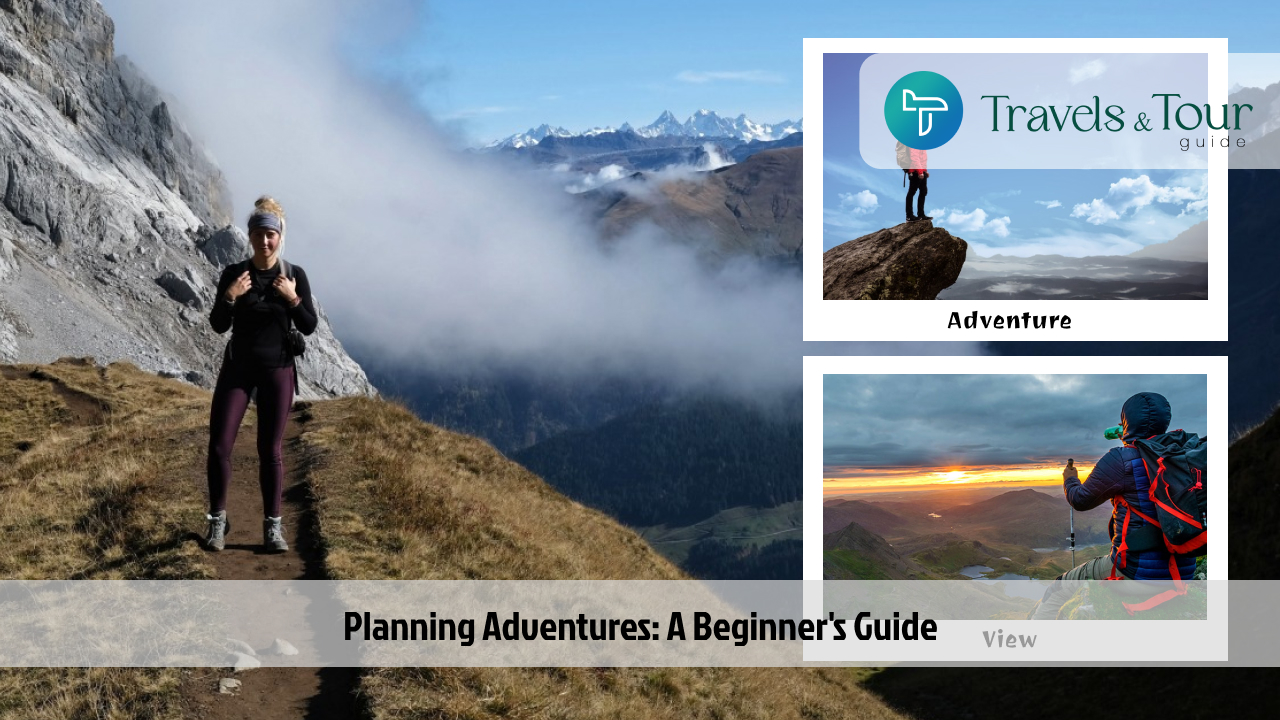
The key lies in breaking it down into manageable steps and ask yourself the right questions to walk you through the initial stages of adventure planning, helping you figure out what you want to do, where you want to go, and when is the best time to do it.
Step 1: Identify Your Adventure Interests
The first step in planning an adventure is to determine what type of activity or experience you are interested in. Do you envision yourself hiking through rugged landscapes, paddling through serene waters, or conquering towering peaks? Maybe you are drawn to the thrill of an exhilarating road trip or the serenity of wild swimming in pristine alpine lakes.
If you are unsure about your interests, reflect on past vacations or activities that brought you joy. What aspects of those experiences did you enjoy the most? Did you relish the opportunity to explore new landscapes, challenge yourself physically, or immerse yourself in nature? Use those memories as a starting point to identify the kind of adventure that resonates with you.
Step 2: Choose Your Destination
Once you have pinpointed your adventure interests, it is time to decide on a destination. Perhaps you have stumbled upon breathtaking images on social media that have captured your imagination, or maybe a friend’s travel tales have inspired wanderlust within you.
Do not be afraid to let your curiosity run wild! Look through the internet for destination guides, create virtual wishlists or inspiration boards, and dive into travel literature like guides, which offer valuable insights into potential hiking routes and multi-day trips in various regions.
Step 3: Consider Timing and Seasonality
Once you have settled on your desired adventure and destination, it is crucial to consider the timing and seasonality of your trip. If you are working around a limited vacation schedule, you may need to be flexible with your plans or choose a destination that aligns with your available time off.
For instance, if you are planning a hiking adventure in Austria during February, you will need to account for the winter conditions and potentially acquire skills in winter trekking to navigate the snowy terrain comfortably. Alternatively, if you are dreaming of a desert adventure in Nevada, summer might not be the most practical time due to the intense heat.
If your schedule is more flexible, you have the luxury of choosing the optimal season for your desired adventure. Conduct thorough research to ensure that the weather, conditions, and seasonal factors align with your plans, allowing you to make the most of your experience.
Step 4: Cost Planning for Your Adventure
One of the most crucial aspects of planning an adventure is considering the costs involved. The budget you have may influence the destination you choose. If you are planning well in advance, evaluate if there are any daily expenses you can temporarily reduce to make it work financially. However, if cutting costs is not feasible, it is advisable to start making arrangements as early as possible to realistically budget for everything. If the costs seem too high, you could reconsider your plans and explore similar adventures closer to home to save money. At this stage, you are trying to estimate the overall costs roughly. Ideally, you should have a buffer of at least 20% extra to account for any potential price increases.
Assessing Your Skill Set
To have an enjoyable and safe adventure, it is essential to be confident in the necessary skills. Take a moment to consider the specific activities you will be undertaking. If you are planning a multi-day mountain adventure during the summer months, examine the route carefully. Will there be any scrambling involved? Do you need to carry a heavy backpack, and are you comfortable doing so? If it is a winter hiking adventure, do you know how to use snowshoes, assess snow conditions, and stop yourself from falling? Any adventure will challenge you beyond your comfort zone, but proper preparation is key to enjoying it, succeeding, and staying safe. If there are skills you need to develop for your adventure, consider practicing them closer to home before your departure date. Adventures often lead to other adventures, so embrace the learning experience.
Choosing Your Travel Companions
Consider what you crave from this experience. Do you want the feeling of accomplishing it solo while trekking alone? Or do you seek connection and camaraderie of traveling with a friend, partner, or a larger group? It is crucial to reflect on what you want and need from this experience and decide to envision yourself traveling with your chosen companions.
Shorter Day Trips
Going on an outdoor adventure, whether it is just for a day or a few nights, still requires some preparation to ensure a fun and safe experience. While not as involved as planning for a longer trip, a bit of forethought can go a long way. Here are some key areas to cover:
Map Out Your Route
No matter your planned activity, mapping out your route ahead of time is crucial. Do not just rely on one device or app – have backup plans like downloading maps/directions offline or printing out hard copies. For multi-day trips, use mapping tools to plan out reasonable distances to cover each day and potential campsites for overnights. This is especially handy if you need permits specifying campsites. Also consider water sources along the way – study the terrain to estimate your water needs and identify refill opportunities. Finally, drafting a meal plan prevents overpacking food while ensuring you have enough fuel.
Assess Your Abilities
While pushing your limits outdoors can be exhilarating, it is important to do so carefully. Honestly evaluate whether your planned route matches your current skill and fitness levels. If unsure, err on the conservative side – it’s better to undertake some training hikes first rather than getting in over your head on the real adventure. The training can be rewarding itself!
Pack Appropriately
Think about your location, season, and expected conditions to determine proper gear. For day trips, pack only necessities like sun protection, snacks, water, etc. Test any seldom-used equipment beforehand. For overnight trips, resupply dehydrated/lightweight foods to trim pack weight. Consider making your own dehyrated meals – an investment like an Excalibur dehydrator pays off over preparing expensive pre-packaged options. Load up on versatile layered clothing you can re-wear. Make a checklist to avoid forgetting essentials.
The key is striking that balance between being prepared yet traveling light and smart for shorter adventures. A little proactive planning goes a long way towards an amazing outdoor experience!
Getting to Your Adventure Spot
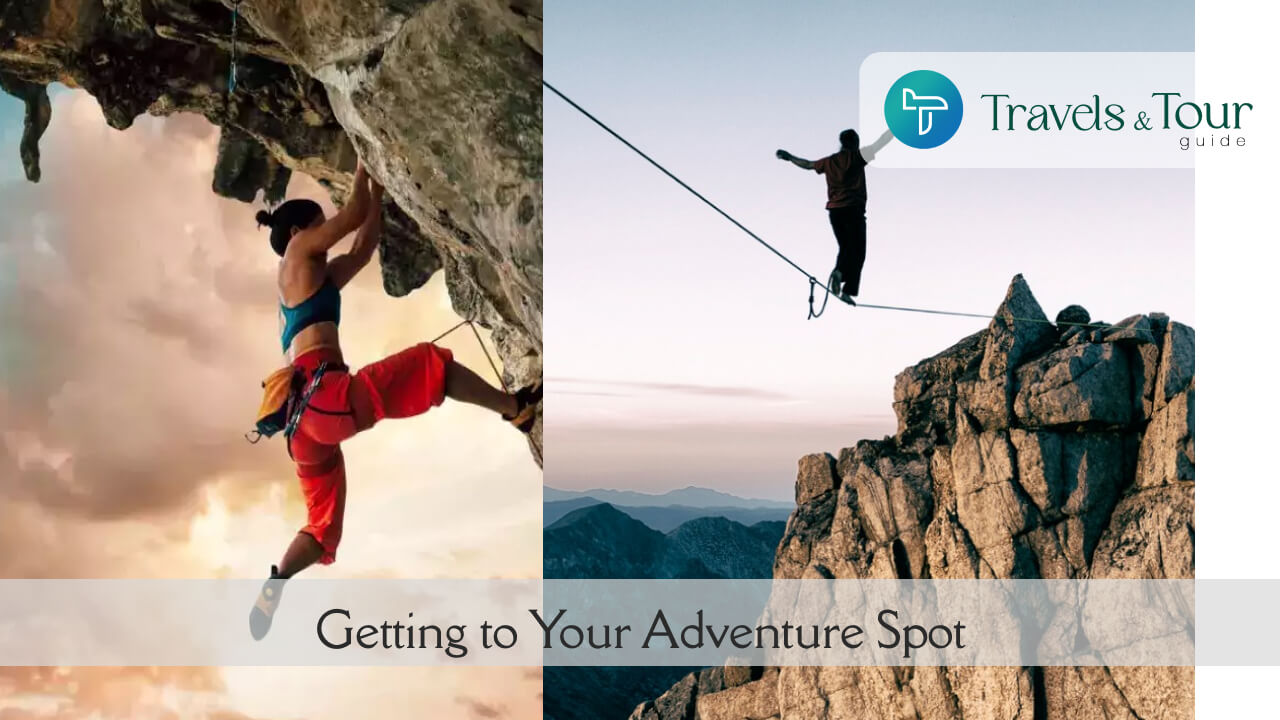
If you are planning a day adventure on your own without a guide, it is wise to do some research beforehand. Look into how busy the trailhead or starting point tends to get. This will help you figure out the best time of day to go to avoid crowds. It is also a good idea to have a backup plan ready, just in case the parking lot is full or the area is too crowded when you arrive. You don’t want to be disappointed after getting all geared up!
If you will be using public transportation or a shuttle service to reach your start point, make sure to account for travel time in your planning. Leave some extra wiggle room too, in case there are delays. The same goes if your route is linear rather than a loop – you will need to plan how to get back to your starting point or transportation when you are done.
Longer Multi-Day Trips
If you are going on a multi-day adventure, which is longer than a day trip but not quite a huge expedition, this section has some advice. Longer trips can feel overwhelming to plan at first. Once you have a clear idea and goal, it is time to handle the logistics. This crucial prep work ensures you have thought of everything you will need so you can just focus on the adventure itself when you start.
Here are the key things to work through when planning a longer multi-day adventure – these are the exact steps we follow:
Planning an adventure trip can be an exciting prospect, but it also requires careful consideration of various costs involved. It is nearly impossible to account for every single penny, and the expenses may vary from one adventure to another. However, you can get a good estimate by breaking down the main cost components.
Accommodation is one of the essential expenses you need to factor in. Depending on your preference, you might want to look into hotels, hostels, or even camping options. If you plan to visit multiple areas or need to book multiple accommodations, it is helpful to create a separate cost breakdown for this category. Keep in mind that accommodation prices may change as you get closer to your travel dates, so it is wise to book early.
Transportation is another crucial aspect that requires thorough research. You will need to determine the most efficient and cost-effective way to get around your destination. Will you need to rent a car, or can you rely on public transportation, transfers, or other modes of transportation? If you are not renting a car, try to find the exact prices for public transportation, but if that is not possible, get a rough estimate and set aside more than you think you will need based on your research about the location.
Do not forget to account for the cost of getting to your destination, such as train tickets or flight costs. Additionally, you may need to budget for airport transfers, airport parking, and train fares. If you have pets, you will need to consider the cost of pet-sitting.
Your daily living costs and budget are also crucial factors to consider. Research the cost of living in your desired location. Is it generally cheaper or more expensive? Are there entry fees for the places you want to visit? How much will you need for food? If you are on a budget, you can create a meal plan to help manage your food costs. Depending on your destination, you may also need to factor in COVID-19 or other vaccination fees and visa fees.
How to keep track of your travel?

Create a spreadsheet or use a tool like Google Sheets. This will allow you to visualize the cost breakdowns, track updates and changes, and see the overall costs in an easy-to-understand format.
In addition to the costs, you will also need to plan your travel logistics and route. Depending on the time of year you are traveling, transportation options and availability may vary.
If your adventure involves a road trip or a multi-day trek, you will need to carefully plan your route. For a road trip, determine how many hours you will need to drive each day to fit your time frame, and account for potential delays or changes. For a multi-day trek, research the distance you will need to cover each day and the elevation profile to assess what is realistic within your timeframe. You may also need a way to track your location or access offline maps in areas without cellular service.
By breaking down the costs and logistics into manageable components, you can better prepare for your adventure and ensure that you have a realistic understanding of the expenses involved and the necessary planning required.
Why need a spreadsheet?

Planning your days for an adventure is crucial, and the complexity of the planning process depends on the type of adventure you are embarking on. Regardless of the adventure, an itinerary is always a wise decision. While we often advocate for slow travel and not over-planning every aspect of your journey, it is still beneficial to have a rough outline in place, leaving room for flexibility and spontaneity.
One effective way to organize your plans is by creating a simple spreadsheet or using a tool like Google Sheets. This allows you to visualize your plans in a clear and structured manner, keeping track of the days, months, and dates you’ll be away, as well as your destinations and any necessary stops or considerations.
The spreadsheet does not need to be overly complicated, but it should include essential information such as the number of days per month, the approximate travel distance or duration for each day (if applicable), a brief description of the adventure or the specific section you will be tackling on a given day, and any important notes or reminders related to that day’s activities (e.g., resupply points, fuel stops, etc.).
By having your plans laid out in a spreadsheet, you can easily identify potential issues or conflicts before you embark on your journey, and make necessary adjustments. Additionally, you can sync a copy of the spreadsheet to your mobile device, allowing you to access your itinerary on-the-go.
For longer adventures, such as thru-hikes, this visual representation of your plans can be invaluable, helping you see at a glance what needs to be accomplished each day and where you might need to stop for resupplies or other essential needs.
Keep buffer days to relax on a holiday
It is generally recommended to leave some leeway or buffer time in your plans to accommodate unforeseen circumstances, such as delays or activities taking longer than expected. Tightly packing your schedule can lead to unnecessary stress and diminish the enjoyment of your adventure. If you have limited time, it might be better to opt for a shorter adventure, as worrying about strict timelines can detract from the overall experience.
Additionally, incorporating rest days into your itinerary can be highly beneficial, especially for longer adventures or extended periods of travel. A well-timed rest day can help you recharge, regain your energy, and reignite your excitement for the journey ahead.
Remember, the key is to strike a balance between having a structured plan and maintaining flexibility, ensuring that your adventure remains enjoyable and stress-free throughout.
Taking advice from other travellers
If others have done a similar trip before, look online for their tips on how to structure the days and what is realistically achievable. Their advice can take some of the guesswork out, while still allowing you to customize the plan to your preferences.
Booking accommodation is a key consideration. A site like Booking.com is convenient as they tend to have flexible cancellation policies so you can modify plans closer to the dates if needed. If camping, be sure to look into any required permits well in advance.
Hiring a local guide
Depending on your destination and activities, hiring a local guide may range from being a nice bonus to an absolute necessity. Do your research – for some adventures, you cannot access certain areas without an accredited guide. When selecting one, read reviews and only work with companies you get a good feeling about. Local guides can provide invaluable insider knowledge to create a richer, more authentic experience attuned to the local culture. They can also advise on activity logistics you may not anticipate. When possible, hire local guides to support the local economy and sustainable tourism. For some extreme adventures like long distance swims, you may even need to hire an entire support crew, so factor that in early.
Visa and Paperwork
Check visa and entry requirements thoroughly based on your nationality and destination(s). Government websites are the best sources. Avoid pricey visa services when you can apply directly. Have visa paperwork sorted as early as possible before travel dates.
Book tickets in advance
Lastly, some parks, trails, campsites etc. require special permits, with strict quotas and application timelines, often many months in advance or through lotteries. Research all permit needs comprehensively at the planning stage before something is booked out and derails your trip.
If you are working with a guide, they will provide you with a list of items you need to bring along. However, if you are going solo, you need to make a list of everything you will require for each day of your adventure. This includes gear you already have and items you need to purchase.
Packing up essential gear
It is essential to break in your new gear, such as backpacks and boots, well in advance to get comfortable with them before your adventure. There are many guides available that can help you choose the best gear for your specific adventure, like the best watch for hiking, hiking belts, gear for cold water swimming, and more.
Do not forget to include any specialized equipment you might need, like camera gear if photography is one of your main reasons for the adventure. You may need to rent lightweight equipment or buy a new lens. Also, consider if you need a power bank to charge your phone or other devices during the trip.
Vaccination Requirements
In the wake of the COVID-19 pandemic, we have become more conscious of vaccination requirements. However, many destinations have long required specific vaccinations before the pandemic. You can find information about vaccination requirements for your destination on the government or embassy website. It is crucial to get vaccinated as soon as possible, as some vaccinations need to be administered within a specific time frame before your trip. You can usually get vaccinations at your local pharmacy, but you may need to allow time for them to order less common vaccines.
Travel Insurance
If you have general travel insurance, check if it covers you for the medical treatment you might need based on your adventure plans and activities, such as high-altitude trekking. Ensure that your standard travel insurance covers you for the country you are visiting. If your adventure is more extreme, you may need to look for specialized adventure insurance, as regular insurers may not cover such activities. If you are traveling within Europe, carry a European Health Insurance Card (EHIC) for state healthcare throughout Europe.
Final Thoughts
For longer adventures, create a checklist to ensure you have finalized costs, made a clear plan with flexible timelines, secured accommodation and travel arrangements, booked guides if needed, obtained visas/permits, made an equipment list and purchased necessary gear, gotten vaccinations, and purchased appropriate insurance to be safe and secure even when travelling.

